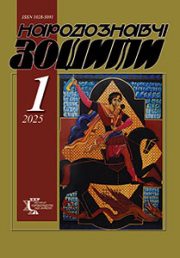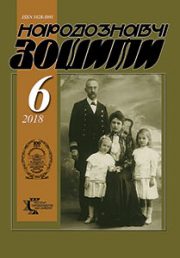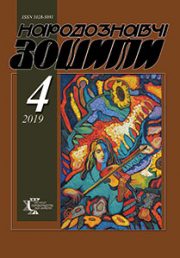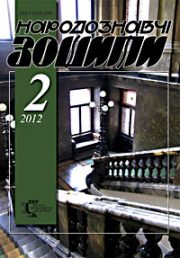The Ethnology Notebooks. 2018, 1 (139), 189–199
UDK39 (477.85)
DOI https://doi.org/10.15407/nz2018.01.189
Received 21.12.2017
PUBLIC-COMMUNE MUTUAL ASSISTANCE AT POKUTTIA: TOLOKA, KLAKA, POMOCHI, SUPRIAZH
ORCID ID: https://orcid.org/0000-0001-7241-9466
Taras Yaroslav, doctor of History, professor, Candidate of Sciences in
in the Department of of the modern ethnology
of the Institute of Ethnology of the National Academy of Sciences of Ukraine.
Svobody Avenue 15, 79000, Lviv, Ukraine.
Contacts: e-mail: etnomod@ukr.net
Professor
National University “Lviv Polytechnic”
Abstract. The article deals with public-commune mutual assistance at Pokuttia, which took place in the second half of the 19th century to the present days: toloka, klaka, pomochi, supriazh. On the basis of field material, it was analyzed how: toloka`s were made: «peel the corn», «spin the flock», «to soil the house», «pulling feathers», pomochi etc. Their organization is ascertained: the invitation to the toloka, the time of their conduct, the contingent of the participants, the menu of the dishes and the order of their presentation, the form of leisure. The significance of toloka`s for social and public life and the preservation of rural communities has been established.
Keywords: Pokuttia, toloka, klaka, supriaha.
REFERENCES
Vozniak, M. (1995). Narodnyj kalendar iz Ovruchchyny 50-kh rokiv XIX st. u zapysi Mykhajla Pjotrovs’koho. Zapysky Naukovoho tovarystva imeni Shevchenka. L’viv. Т. CCXXX. P. 303–348.
Dem’ian, H. Bojkivschyna: Materialy naukovoi ekspedytsii 1979 r. Т. 6.
Istoriia sela Yaseniv Pil’nyj. Z rozpovidej zhyteliv sela ta arkhivnykh materialiv (2010). Ivano-Frankivs’k: Misto NV.
Mokhoruk, D. (2005). Selo moie Toporivtsi: istoryko-kraieznavchyj ta etnohrafichnyj narys (Kn. 1). Sniatyn: Prut Prynt.
Pan’kiv, M. (2000). Ahrarni vidnosyny na Pokutti ta ikh sotsial’ni naslidky v druhij polovyni XIX stolittia – pershij polovyni XX stolittia. Yamhoriv. Ch. 11–12.
Romaniuk, Ya., Romaniuk, L. (2012). Zaluchchia nad Cheremoshem. Istoryko-publitsystychna rozpovid’. Sniatyn: Prut Prynt.
Solianych, D. (1932). Varvara. Khto vynuvatyj ta inshi opovidannia z zhyttia selianstva na Pokutti. Edmonton. P. 40–94.
Tarnavs’kyj, R. (2012). Toloka iak vidrobitkova renta u hospodarstvakh velykykh zemlevlasnykiv. Visnyk L’vivs’koho Natsional’noho universytetu im. I. Franka. Seriia istorychna. Vyp. 47. P. 30–43.
Skorowidz gminy Galicyi opracowany na podstawie wynikуw spisu ludnoњci z dnia 31 grudnia 1900 r. Wiedeń, 1907. S. 210–215, 292–297, 602–608, 694–700.







